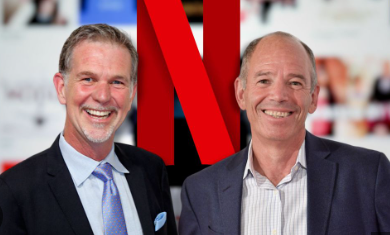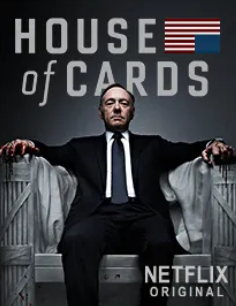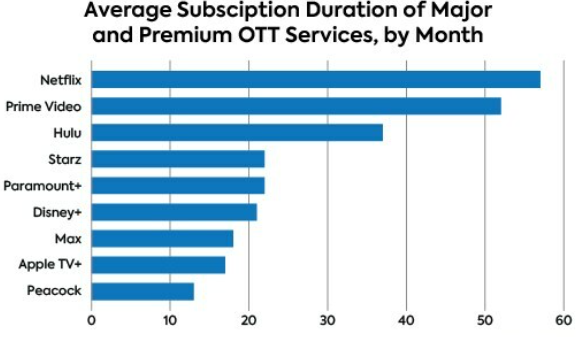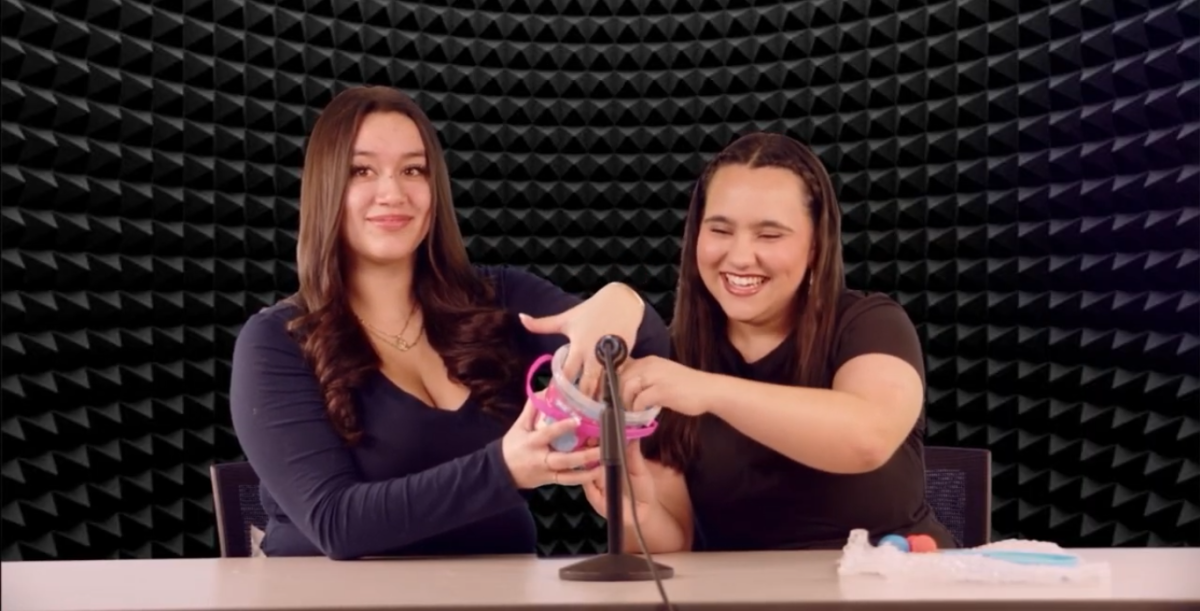How Netflix Began

Created in 1997 by Reed Hasting and Marc Randolph, Netflix started out as a DVD-by-mail-service in California. Randolph loved the idea of Amazon.com and how it sold items online. He wanted to find a way to sell portable items over the internet in a similar manner. Hasting and Randolph considered and rejected selling VHS tapes since they were either too expensive or too delicate to sell and ship. After hearing the introduction of DVDs on March 24, 1977, they decided to test the concept of selling DVDs by mail and sold a compact disc to Hastings house in Santa Cruz. Once they realized that the DVD was intact after it was shipped, they decided to start their DVD-by-mail service called Netflix. In the beginning, Netflix allowed customers to subscribe on a personalized web-based movie recommendation and rental system. Later into the years, Netflix expanded to online streaming and gained millions of subscribers.
Netflix’s Struggles after Opening to the Public

On April 14, 1998, the company opened with 30 employees and 925 titles for rental. Netflix offered a seven-day DVD rental for four dollars, plus two dollar shipping with additional fees if the discs were kept longer. Customers could purchase a disc once they got home and the retail price charged to their credit card. Years passed and Netflix was having trouble gaining traction in the rental industry. This led to higher expenses than its revenue. The company even got an offer to sell the business by Jeff Bezo, the owner of Amazon.com, for $14-$15 million, but turned it down. In September 2000, the dot-com bubble, a period where investors poured money into the internet-based startups in hopes of gaining a profit, peaked and put Netflix in a troubling situation. They were already suffering losses and the dot-com bubble made it worse. With this situation, the creators decided to sell the company to Blockbuster for $50 million. The owner of Blockbuster, John Antioco thought it was a joke and refused the offer. The continued effect of the dot-com bubble caused the company to hold off on any of its initial public offerings (IPO), and had to lay off one-third of its 120 employees.
Netflix’s new subscription-based model

The newly applied subscription-based model was put into place in 1999, replacing the traditional way of renting a DVD and having it shipped to the customers house. This new model allowed customers to pay a monthly fee to rent DVDs without due dates or late fees. It also allowed subscribers to keep a certain amount of DVDs at a time and exchange them for new ones as often as they liked. Even though Netflix was going through losses because of the dot com bubble in 2000, this model provided a stable source of revenue from its growing subscriber base and allowed Netflix to overcome the dot-com bubble. Additionally, the subscription model laid the foundation for streaming by familiarizing customers with the idea of paying a monthly fee for access to content.
The Switch from DVDs to Streaming

In January 2007, Netflix announced the launch of their streaming service. To access videos, subscribers had to install a special browser applet. Subscribers using the $17.99 plan had 18 hours of streaming content. However, in 2008, Netflix changed the 18 hours of streaming to unlimited streaming for all of its subscribers. Netflix’s switch to streaming helped generate one billion dollars in revenue for the first time since they opened. Over the years, the company’s subscriber count grew by 18%, revenues were up by 21%, and the company’s net income grew by 36%. Due to the increase in online streaming, Netflix decided to increase the costs for streaming. Netflix started to expand throughout the world, starting with offering the streaming-only subscription plan in 2010 in Canada. After Canada, the company offered plans in Latin America and the Caribbean in 2011. Next came the United Kingdom, Ireland, and Scandinavia in 2012. By 2016, Netflix streaming services were available in more than 190 countries and territories. With the help of online streaming, Netflix became one of the biggest revenue generators—with more than 200 million subscribers in 2021.
The Creation of Netflix Originals

For Netflix to differentiate itself from other services, Netflix had the idea to start their own original programming with their first original series, House of Cards in 2013, and Orange Is the New Black later that year. Netflix Originals would allow the company to become less dependent on movie and television studios. Not having to depend on movie and television studios gave the company leverage over its supply chain of content providers, as well as gaining loyal subscribers. At first, creating their own content posed a financial threat, but later paid off when shows like Stranger Things and The Crown attracted a larger subscriber base. Netflix continues to invest heavily in original programming across various genres, which include comedy, drama, documentaries, and reality TV.
Netflix Compared to other Streaming Services

Netflix has risen exponentially since its first debut and has been labeled as the most popular streaming service in 2024. 99% of U.S. households have a subscription to at least one or more streaming services, with Netflix topping the chart. Netflix’s global reach and robust lineup set it apart from competitors, including Amazon Prime Video and Hulu. Even though Prime Video and Hulu create their own exclusive content and have unique features, Netflix’s combination of content variety, user experience, and global presence has solidified its position as the most popular streaming service. Available in nearly 200 countries and territories, Prime Video has expanded around the world just like Netflix, while on the other hand, Hulu primarily focuses on the United States market, with limited availability outside the country. Even though Prime Video has reached many countries, it is not as accessible in nearly every country in the world like Netflix. Prime Video and Hulu are main competitors that Netflix has, but considering the differences in global reach, Netflix surpasses them without hesitation. While both Prime Video and Hulu may not consistently beat Netflix in overall viewership or global reach, they remain formidable competitors with captivating content and original shows that stand toe to toe with Netflix.
From its humble beginning as a DVD rental service to its evolution into a global streaming powerhouse, Netflix has continually revolutionized how audiences consume and experience content. Through relentless focus on customer satisfaction, Netflix has cemented its place as a leader in the streaming industry. Committed to pushing boundaries, Netflix continues to shape the future of entertainment, and deliver unparalleled storytelling experiences to audiences around the world.
Work Cited:
Durrani, A. (2024, February 2). 2024 Media Streaming Stats You Should Know – Forbes Home. Forbes. Retrieved April 11, 2024, from https://www.forbes.com/home-improvement/internet/streaming-stats/
FasterCapital. (n.d.). How Did Netflix Start As A Company And What Were Its Early Challenges. FasterCapital. Retrieved April 11, 2024, from https://fastercapital.com/topics/how-did-netflix-start-as-a-company-and-what-were-its-early-challenges.html
Hansen, M. S. (2021, February 26). Netflix is a Subscription Success – but how did they become a success? Subscrybe. Retrieved April 11, 2024, from https://subscrybe.com/netflix-subscription-success/
Jain, S. (2024, March 26). History of Netflix- Founding, Model, Timeline, Milestones (2024 Updated). VdoCipher. Retrieved April 11, 2024, from https://www.vdocipher.com/blog/2017/06/netflix-revolution-part-1-history/
ZIPPIA. (n.d.). Netflix History: Founding, Timeline, and Milestones. Zippia. Retrieved April 11, 2024, from https://www.zippia.com/netflix-careers-8010/history/




















